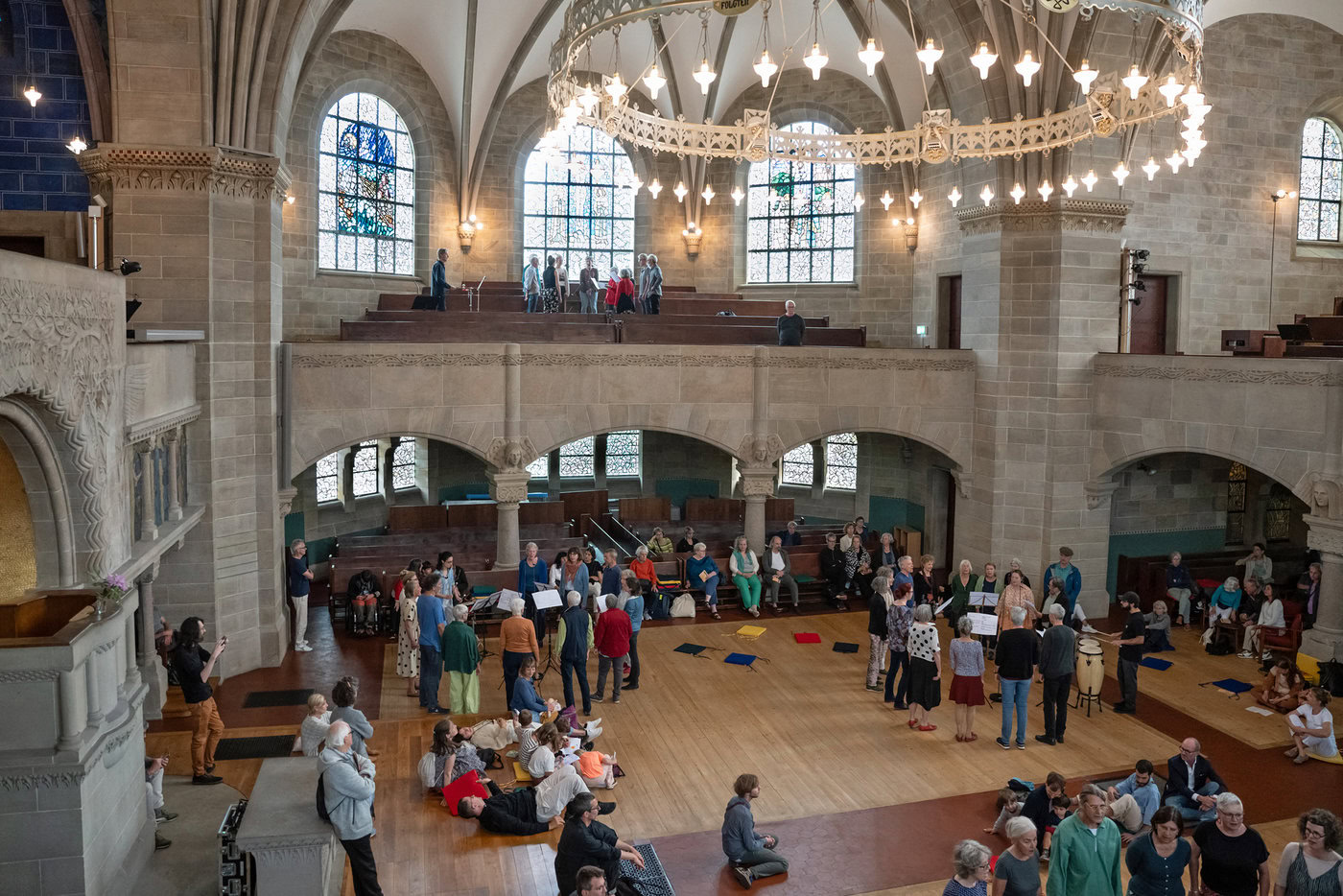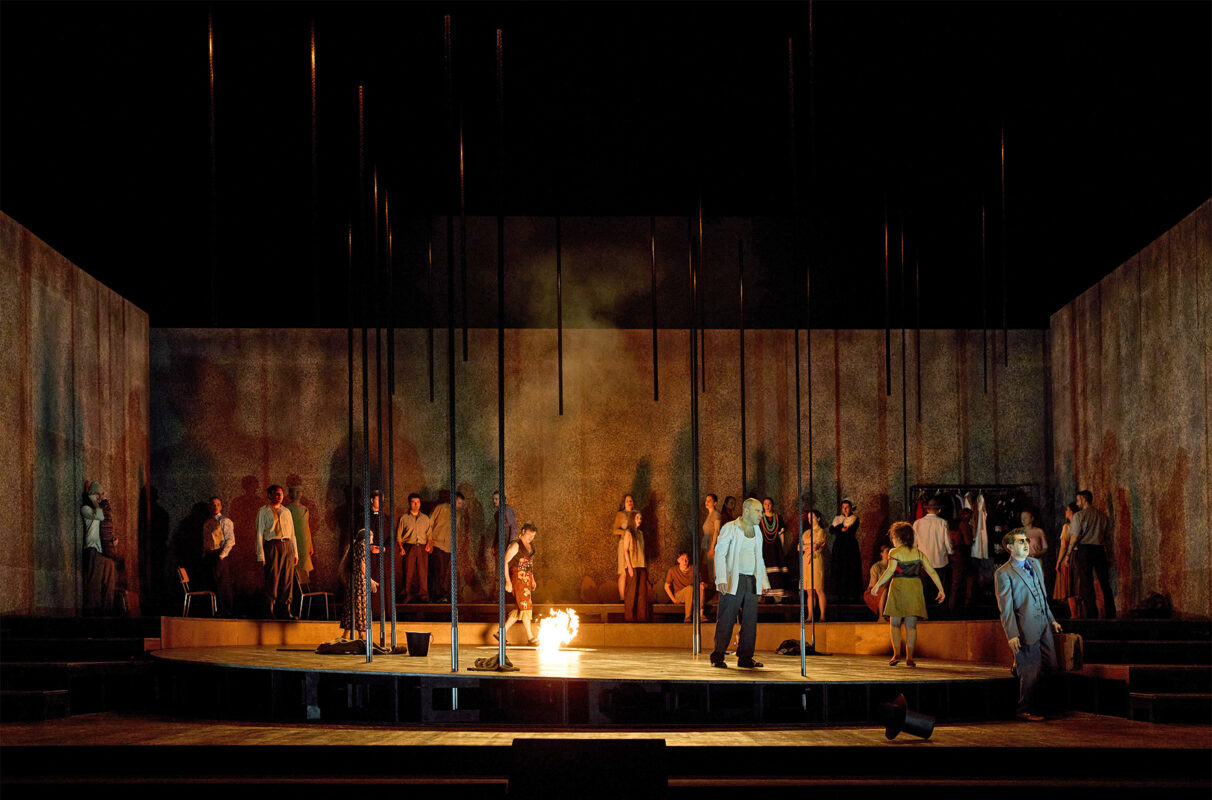Cardew's "The Great Learning" in Basel
Nine amateur and professional ensembles with around 300 participants ventured into a monumental work of the English avant-garde. They sang, whistled and played their way through St. Paul's Church for a whole Sunday.

It was Marianne Schuppe's great wish, The Great Learning by the English avant-gardist Cornelius Cardew before leaving the Basel section of the International Society for New Music. This meant an unusual amount of work and about a year and a half of preparation. The piece from 1969, which lasts around seven hours, consists of seven paragraphs. They correspond to the Confucius text of the same name. In addition to the completely graphically notated Treatise (1967) as Cardew's magnum opus.
From avant-gardist to activist
Cornelius Cardew, born in 1936, studied cello, piano and composition at the Royal Academy of Music in London in the mid-fifties (he later became a professor there) and electronic music at the Hochschule für Musik in Cologne. There he became a close collaborator of Karlheinz Stockhausen. He also worked with John Cage, among others. From 1965, as a member of the AMM ensemble, he cultivated radical improvisation techniques inspired by Cage's aleatoric principle.
Around 1969 The Great Learning he founded his legendary Scratch Orchestra, which included both professional and amateur musicians as well as visual artists and actors. The orchestra later broke up due to his increasing political radicalization, as he wanted to put it at the service of his subversive ideas. Within a few years, he developed from a musical avant-gardist to a radical Maoist. In his book Stockhausen serves imperialism he settled accounts with his former teachers and even distanced himself from his own major works Treatise and The Great Learningwhich were created under their influence. Cardew died at the age of 44 in a traffic accident.
Professionals and amateurs
Confucian philosophy is based on the claim of the moral perfection of society, to which the individual must subordinate himself and fulfill his assigned tasks. The score of The Great Learning is based on Ezra Pound's translation of the seven paragraphs and, as an "action score", manages with relatively few notes. Cardew organizes the short texts, inserts graphics and gives precise performance instructions in which the respective ensemble leadership plays a decisive role. The author makes a clear distinction between professionals and "untrained voices". The performance on May 26 at St. Paul's Church also featured a mixed cast of artists. Choirs and ensembles from the Basel region were heard under their own direction.
Individual and collective
Anyone expecting only aching and screaming dissonances was in for a surprise. A kind of education project atmosphere was created and the audience was treated to a contemplative setting and repetitive feel-good harmonies for long stretches. Nine individual formations came together, each performing one of the seven sections of different lengths. Only in section 5 were three groups involved. In addition to the professional vocal ensemble Larynx, sounding down from the galleries, the Impronext ensemble from the Basel music school and classes 2A and 2B from the Kirschgarten grammar school had the opportunity to sing, play and create sounds on the playing area around the church.
While the complex organization of this section alone takes up 12 of the 23 pages of the score, the purely vocal section 7, which lasts much longer, manages with half a page. Only the text parts and the entries of the performers are notated here. The "instructions for use" can be found in the small print. Clear tasks are assigned to the individuals: When and at what pitch they are to enter, how long they are to sing in order to achieve a homogeneous overall sound. "If the root be in confusion, nothing will be well governed" was the core message. It was presented by pourChœur in a concentrated and non-stop manner for 75 minutes. The spatial sound of the church was incorporated in an impressive way.
The choir from Gymnasium Münchenstein provided an effective opening in section 1 with whistle and organ sounds as well as chants. This was followed by a disciplined performance by the Contrapunkt Choir from Muttenz (section 2). In paragraph 3, the Ensemble Liberté, all in white and moving in clear forms, proclaimed the connection between strong roots and healthy branches. Paragraph 6 is the only one without any voices at all. Christoph Schiller and his instrumentalists dabbed subtle soundscapes into the space. And finally, in paragraph 4, the Basler Beizenchor not only sang, but also played rhythm instruments.
The Confucian principle of the interaction between the individual and the collective is skillfully reflected in Cardew's score. For him, too, the freedom of the individual is always at the service of the greater whole.
Radio SRF 2 Kultur reports on this production on June 26, 2024 from 8 p.m. in the broadcasts Music of our time and New music in concert.








